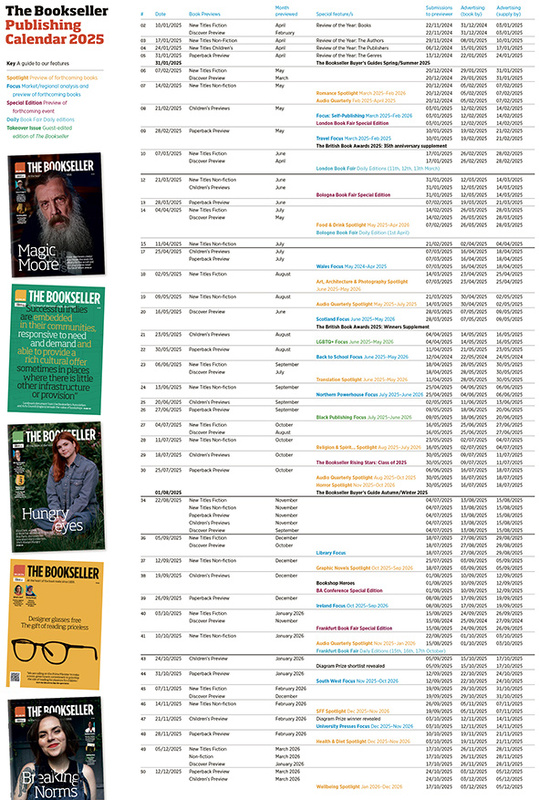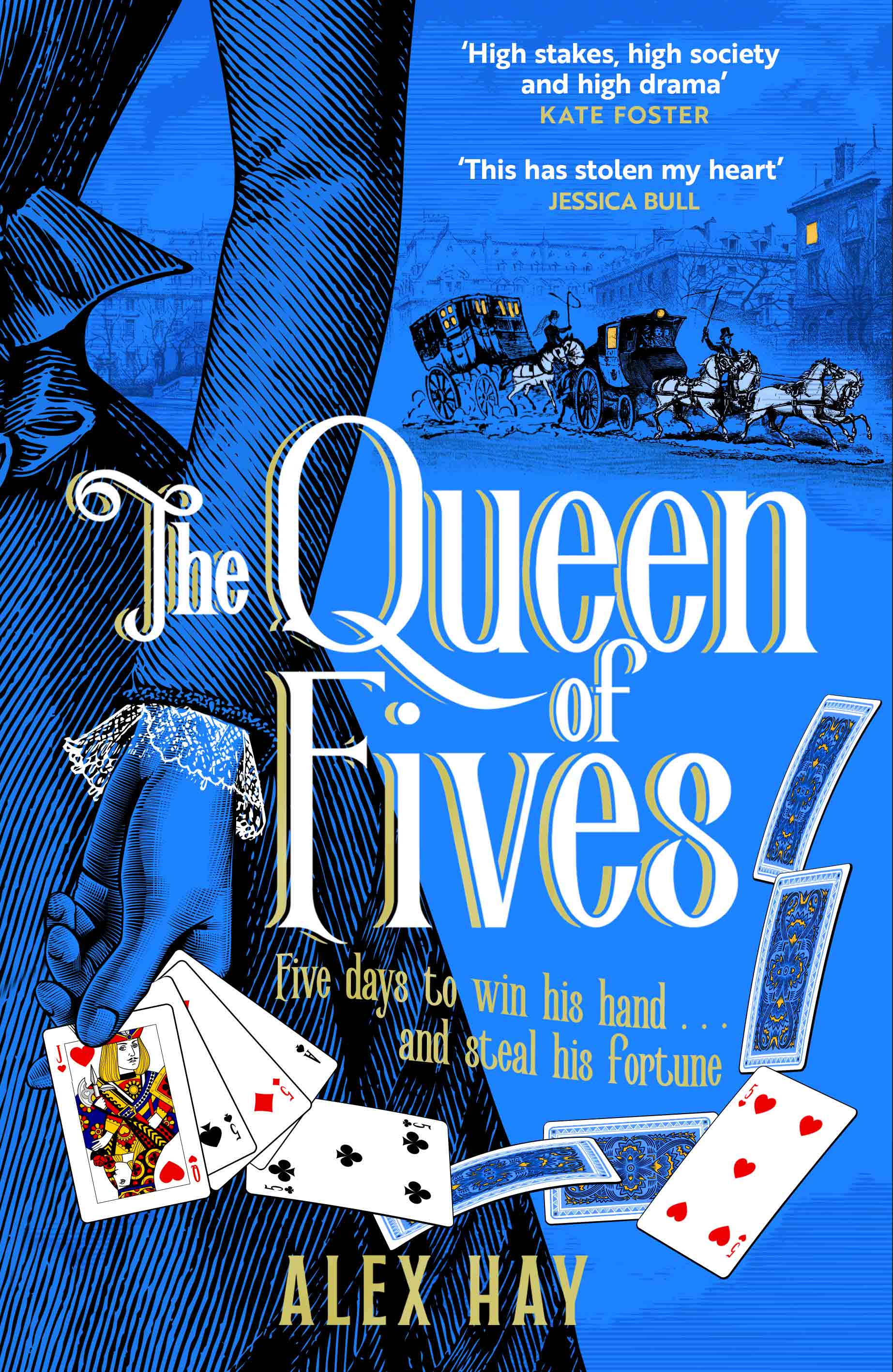You are viewing your 1 free article this month. Login to read more articles.
Alex Hay's second novel tells of a con woman's plot to swindle the richest family in England
 Alice O'Keeffe
Alice O'KeeffeIn a nutshell, I read books for a living. I interview authors for The Bookseller's weekly Author Profile slot and write the monthly New T ...more
Alex Hay talks about the writing process for his second novel, The Queen of Fives

In a nutshell, I read books for a living. I interview authors for The Bookseller's weekly Author Profile slot and write the monthly New T ...more
Alex Hay made quite the first impression with his début novel, The Housekeepers, the Edwardian-set tale of an audacious heist perpetrated by the recently dismissed housekeeper of a Mayfair mansion against her former employers. Scooping excellent reviews from the Times to Prima, it was selected by Waterstones as a Book of the Month. When we meet in a café near his home in southeast London on a rainy afternoon, Hay tells me that, having “revelled” in the intricate plotting demanded by a heist, he was keen to find “another classic caper framework” for his second novel. “A con appealed to me instantly,” he says, citing the opportunity “to play with false identity, doubleness and with the natural reveals that come with the unfolding of a grand deception”.
And what a glorious grand deception it is. Set in 1898, The Queen of Fives introduces Quinn le Blanc, con woman extraordinaire, who, from her base in a deceptively shabby old house in Spitalfields known as the Château, plots to relieve rich men of their fortunes. The Château is “a fraud house, a cunning firm, a swindler’s palace”, writes Hay, and 26-year-old Quinn is the latest in a long line of “queens” to rule it, aided by her elderly, faithful lieutenant Mr Silk. But business has not been so good recently, so Quinn, aka the Queen of Fives, is making meticulous plans to execute the most daring con of her career: to trick the eligible Duke of Kendal into marriage, and so lift a fortune from the richest family in England.
The Housekeepers was “planned to within an inch of its life”, Hay tells me, complete with a “huge spreadsheet” containing every scene mapped out in detail. Naturally, Hay approached the planning of his second novel in the same way, only for it to fall apart completely when he came to write the first draft. It was “lifeless on the page”, he says. He scrapped it all, went back to the beginning and wrote line by line, page by page. Happily, out of that plan-free process, arose The Queen of Fives’ terrific structure and breakneck pace: Quinn’s elaborate defrauding of the Kendal family will take place over just five days and follow five distinct moves: The Mark; The Intrusion; The Ballyhoo; The Knot; and All In.
When I was writing, I was trying to think about creating my very own Victorian puzzle box. That was the way for me to think about the book having a shape
Quinn’s marks, the Kendal family, live in Kendal House, a sumptuous mansion on the north side of Berkeley Square in Mayfair. Lady Victoria Kendal, known to her family as Tor, is 35 years old, defiantly unmarried and with a penchant for riding out across Hyde Park. She was a particular joy to write, says Hay, with “a complete disregard for the rules” that society seeks to impose upon her, and “an almost childlike confidence that comes from extraordinary wealth. It makes her both independent but incredibly at risk because all of that privilege is dependent on the goodwill of her younger brother.” Tor shares the vast family home with her brother, the Duke of Kendal, single, fabulously wealthy and therefore surely in want of a wife, and their stepmother, the mysterious Dowager Duchess.
But Quinn’s con may not be the only game in town. Like a delicious millefeuille, The Queen of Fives is made up of layer upon layer of intrigue—skillfully done and wildly entertaining. “I think the core story I will always want to write is about big houses and bad families,” says Hay. “Within that, you have so much room for all those tangled rivalries and affections and loyalties and everybody living within their own particular world in a family.” With the Kendal family, “it was about trying to send them into motion, against each other, the world at large and ultimately the person who is trying to defraud them”.
Hay conjures his late Victorian world beautifully, with prose as polished as a mahogany bureau, from describing the various scents on the air in the different parts of London, to the clothes the characters wear.
When he was writing Quinn, Hay was imagining a woman “encasing herself in her disguises”, dressing to fool society into thinking she is a wealthy socialite: “It was me thinking about the weight, and the pull, and the drag of those clothes and those rooms; the lavishly velvet-swagged apartments and chambers that she finds herself in. All of that was trying to pull on the theme of how you could wrap yourself up in these different skins and identities, and the fabrics that come with them.”
Hay observes “a general influence of fin de siècle, late-19th-century sensation fiction hovering over the plot”, specifically Wilkie Collins’ The Woman in White, which he first read as a teenager, and Robert Louis Stevenson’s Strange Case of Dr Jekyll and Mr Hyde. He describes The Queen of Fives as “a story of doubleness and disguises”. Hay explains: “To me, when I was writing it, I was trying to think about creating my very own Victorian puzzle box. That was the way for me to think about the book having a shape—five drawers, five levels, five ways to turn it around.”
Hay has been writing since his teenage years; he estimates that he started but then abandoned “half a dozen” novels over the years. After a Curtis Brown course, he decided to take it more seriously. “I thought, ‘If you are serious about this, and want to be a book-a-year author, you are going to have to write a book a year now.’” He set himself this rather punishing task alongside a day job in the charity sector, until he got an agent. The Housekeepers was his fourth completed novel and, at the same time as submitting it to agents, he also entered it for the Caledonia Novel Award: “I’d entered so many competitions over the years, but never been longlisted.” He won the prize, gained an agent and Headline pre-empted.
Hay is now in a position to write full-time, a long-held dream, he says, “but I try to be very pragmatic in that I’ve always longed to write full-time, and it’s not lost on me that this is a career that doesn’t necessarily follow a steady trajectory—it may be more of a squiggly line.
“My goal is, one day, to have a big backlist. When I think about the authors that I love, that I admire, they all have wonderful bodies of work behind them…that’s always been the dream for me. Just to keep typing, like a demon, and build up those books over time.”










